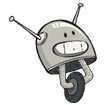Pokémon Go Goes Above and Beyond for Public, Falls Flat for Purists
The eclectic variations and indomitable evolutions of some 150 pocket monsters known as Pokémon first captured our attention in 1995. Pokémon Master-in-training Ash Ketchum introduced us to the electric yellow monster known as Pikachu and we’ve been hooked ever since. “I choose you, Pikachu,” has become synonymous with always choosing your best option. A television series, trading card game, six generations of video games, and more than a dozen films later we thought we had seen it all. Or so we thought.
No more than 24 hours after America had celebrated its independence did Niantic release Pokémon GO. An online frenzy was quickly ignited, outshining any fireworks seen the night before. Within a short amount of time, the demand was much higher than the supply causing Niantics servers to crash and leaving many would-be trainers out to dry.
Much like the television series, the goal of the game is to catch as many Pokémon as one can. Each player is equipped with a number of pokéballs and a map outlining where said Pokéman may be.
The design and layout of the game have brought a lot of attention to both augmented and virtual reality. In less than a week, Pokémon GO did what Samsung and Oculus have been slowly gaining traction on for months now. AR and VR are now terms people are exposed to, and somewhat familiar with. Unlike Samsungand Oculus which require a headset, Pokémon GO is available for download on mobile devices. The ease of access allows each player to start playing almost immediately, without breaking the bank.
As popular as the platform has become, purists will still argue, however, that “Pokémon GO is not AR.”
-
Augmented Reality
By definition, AR is a live, direct or indirect, view of a physical, real-world environment whose elements are augmented by computer-generated sensory input such as sound, video, graphics or GPS data. AR has been around popular culture for a bit now and can be seen when using apps such as Google SkyMap , Google Goggles , and most popularly known Ingress.
-
Maximizing Efficiency
VR differs in that it places the user in a virtual world. Videos have been surfacing online of fearful grandparents fighting off zombies in their living rooms. Children’s hospitals are bringing smiles to bedridden children, allowing them to go “outside” again by means of VR. An entirely new and different world awaits behind a VR headpiece.
Beyond the obvious differences between AR and VR though, the actual intricacies go beyond that.
Digi-Capital’s Reality Matrix segments the market using a few basic definitions:
- Virtual: real world is blocked out (i.e. user can only see the virtual world and virtualobjects)
- Augmented: real world is not blocked out (i.e. user can see the real world and virtual objects)
- Immersive: the technology drivers (too deep into the weeds — see more here) combine to trick the user’s brain into reacting as though it was a real experience
- Ambient: one or more of the technology drivers doesn’t provide the same level of experience as Immersive
The Reality Matrix is made up of four sectors, with some players operating across them to meet different user needs:
- Console/PC VR makes users jump out of the way when a virtual whale swims toward them under the sea
- Mobile VR provides a very good VR experience but isn’t as immersive because of key drivers like positional tracking
- Augmented Reality ranges from the equivalent of Iron Man’s holographic display with transparent virtual objects in the real world in daylight to smartphone/tablet “magic window” AR
- Mixed Reality gives users virtual objects that appear solid in the real world in daylight or switches easily between AR and VR
Where does that leave Pokémon GO?
Is it or isn’t it AR/VR? Well, by its most basic definition Pokemon GO is in fact, AR. While purists were possibly expecting more of Niantic or of the platform itself, it has brought attention to AR. Consumers everywhere have accepted AR on a global scale. Those whom wouldn’t have been aware of or tried AR/VR if not for Pikachu are now actively engaged. In the span of one minute, there is an average of 5,000 downloads with iOS leading the downloads.
If you’re low on Poké balls be sure to stop by SDCH today and load up from the Pokéstop out front where Eevee can be found. Have a root beer on us, talk tech, and when you’re feeling ready, take a shot at a gym battle!
We at SDCH like to know what makes computers tick and always strive to be the very best, so it’s no surprise that we belong to Team Mystic! Show us your team spirit and get 10% off your first visit! Teams Valor and Instinct also welcome!
San diego Computer Help
